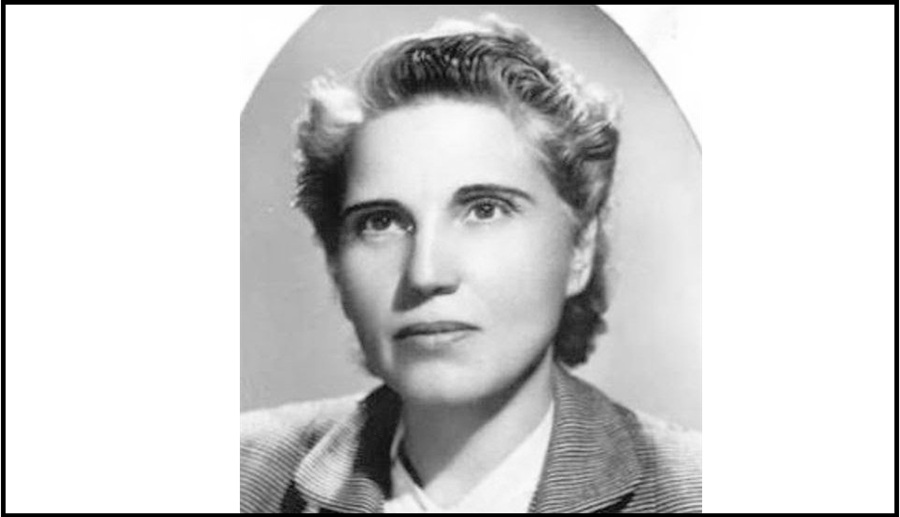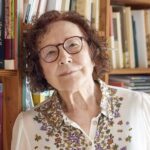- 7 de October de 2025
- No Comment
- 8 minutes read
Estrella Cortichs Viñals, a republican teacher in exile

Estrella Cortichs was a staunch follower of the principles of the Krausist pedagogue Francisco Giner de los Ríos, founder of the Institución Libre de Enseñanza.

Soledad Bengoechea
Estrella Cortichs Vinyals (Gironella, 14 April 1902 – Barcelona, 1985) was a remarkable teacher during the Second Republic. A member of the Institución Libre de Enseñanza1, after the Spanish Civil War she went into exile in Mexico, where she devoted herself to teaching until her return to Spain in 1973.
A daughter of the Republic’s educational ideals, she strove to change things through her work as a teacher—first in Spain, and later in Mexico. A striking example of a committed and innovative teacher of the Republican era in Spain, and of an exiled educational professional, she nevertheless remained almost in obscurity.
It was as if she had foreseen it: she was born on a radiant 14 April 1902 in Gironella, a town in the north of the province of Barcelona. Her father, Esteban Cortichs Costa, a liberal republican and mayor of Gironella, was remembered above all for having built the first state school in the town. Her mother, Francesca Vinyals Riera, was a housewife.
When Estrella was three, her parents separated, and she was placed in a religious boarding school. There she had a solitary childhood, although she always said she retained fond memories of the period, for it was with the nuns that she learned to read, write, and count. Her father wanted his two children to study, and at the age of just thirteen Estrella moved to Barcelona and entered the Salesian schools. After a year there, she enrolled in the Escuela Normal of the Catalan provincial capital. Four years later, she graduated with distinction, receiving the Extraordinary Prize.
She subsequently sat the national competitive examinations for the teaching profession, gaining second place in her cohort. She began her career as a national teacher in Pineda de Mar, a town some fifty kilometres from Barcelona, and later moved to the school of Montmajor, near her native village.
Between 1924 and 1928, driven by her vocation as a teacher, she studied at the Higher School of Teaching in Madrid. She resided in the Residencia de Señoritas, linked to the Institución Libre de Enseñanza, to which she would later belong. There she moved in the same circles as such intellectuals as Ortega y Gasset, Gabriela Mistral, and Berta Singerman.
While Estrella was in Madrid her father died. Without his financial support, she had to teach evening classes in order to supplement her grant. During this period, she contracted tuberculosis, a common illness at the time, and returned to Barcelona to convalesce—precisely when the Second Republic was proclaimed.
Once recovered, she returned to Madrid and began teaching at the Menéndez y Pelayo School, later transferring to a smaller school called Lope de Rueda, of which she became headmistress. In that favourable environment, she began to implement the new pedagogical ideas encouraged by the Republican climate, including visits to the Prado Museum, poetry readings, country excursions. Above all, however, she applied the concept of discipline formulated by the Krausist pedagogue Fernando Giner de los Ríos, so disconcerting to traditional teachers, which held that pupils should learn through conviction rather than imposition: their consciences were to be shaped so that they would do what was right, not simply what they were ordered to do.
At the outbreak of the Civil War, she was visiting friends in Bilbao and had to return to Madrid via France. Once in the capital, the Republican authorities asked her to establish a Universidad Popular, though this could not be realised owing to the war. She eventually moved to Barcelona to direct the Organización de Ayuda Infantil de la Retaguardia (literally, Organisation for Child Relief in the Rearguard), a humanitarian body set up by the Federation of Education Workers of the UGT and the Unified Socialist Party of Catalonia (PSUC) to care for orphans and children displaced by the conflict. Around that time, she married Ricardo Mora Almagro, a socialist radio broadcaster. By September 1938, she was working as secretary of the Dirección General de Evacuación y Refugiados del Ministerio de Trabajo y Asistencia Social (literally, Directorate General of Evacuation and Refugees of the Ministry of Labour and Social Assistance).
When the war ended in February 1939, she went into exile in France, accompanying a group of children. Passing through Toulouse (Haute Garonne), Narbonne (Aude) and Paris (Seine), she searched for Spanish children scattered throughout the villages in those regions, seeking to reunite them with their parents, many of whom were interned in concentration camps across France. In December 1939, she and her husband embarked from Bordeaux for the Dominican Republic. She taught there in a school before moving to Cuba and, later, to Mexico, where she arrived in October 1940.
At that time, large numbers of Spanish Republicans were arriving in Mexico, which welcomed them warmly. One of their most urgent concerns was the education of their children, as many school-age boys and girls had fled into exile. This gave rise to the “colegios del exilio” (“schools of exile”), which also provided many exiled Spanish teachers and professors with a livelihood. These schools drew on the educational model of the Second Republic, itself deeply influenced by the Institución Libre de Enseñanza and the New School movement, which had integrated the most advanced and progressive pedagogical trends of the period. Cortichs first taught at the Luis Vives Institute, founded in August 1939 by a group of fellow exiles. Even so, she was required to revalidate her teaching qualifications and therefore studied for two years at the university. At Luis Vives she formed part of the primary school team, the specialism she had trained in while in Spain.
Her social commitment also led her to collaborate in organising the Subcomité de Higiene y Lucha contra el Alcoholismo y en la Campaña de Alfabetización (Subcommittee on Hygiene and the Fight against Alcoholism and the Literacy Campaign), both sponsored by the Mexican government. Through them she came into contact with former disciples of the Institución Libre de Enseñanza, who were establishing a range of educational initiatives with the support of the Servicio de Evacuación de los Republicanos Españoles and the Junta de Auxilio a los Republicanos Españoles (Spanish Republican Refugee Evacuation Service and the Spanish Republican Aid Board).
The financial difficulties experienced by the Luis Vives Institute during the 1950s forced her to leave the school. She then moved to Colegio Madrid, which, although sharing the ideals of the Vives Institute, segregated boys and girls and required pupils to wear uniforms. She retired from teaching there in 1967. In her final professional years, she did not abandon her social activism, helping to establish the Mariana Pineda Women’s Association, which brought together many Spanish women in exile.
In 1973 she decided to return to Spain, settling permanently in Barcelona, from where she often visited Gironella, where her father was buried. Estrella Cortichs died in Barcelona on 6 December 1985 at the age of 83.
___
1The Institución Libre de Enseñanza (literaly, Free Institution of Education), founded in Madrid in 1876 by Francisco Giner de los Ríos, was an independent, progressive school inspired by Krausist philosophy. It promoted secular, scientific, and holistic education, and left a lasting mark on Spanish cultural and educational reform.
Source: educational EVIDENCE
Rights: Creative Commons

